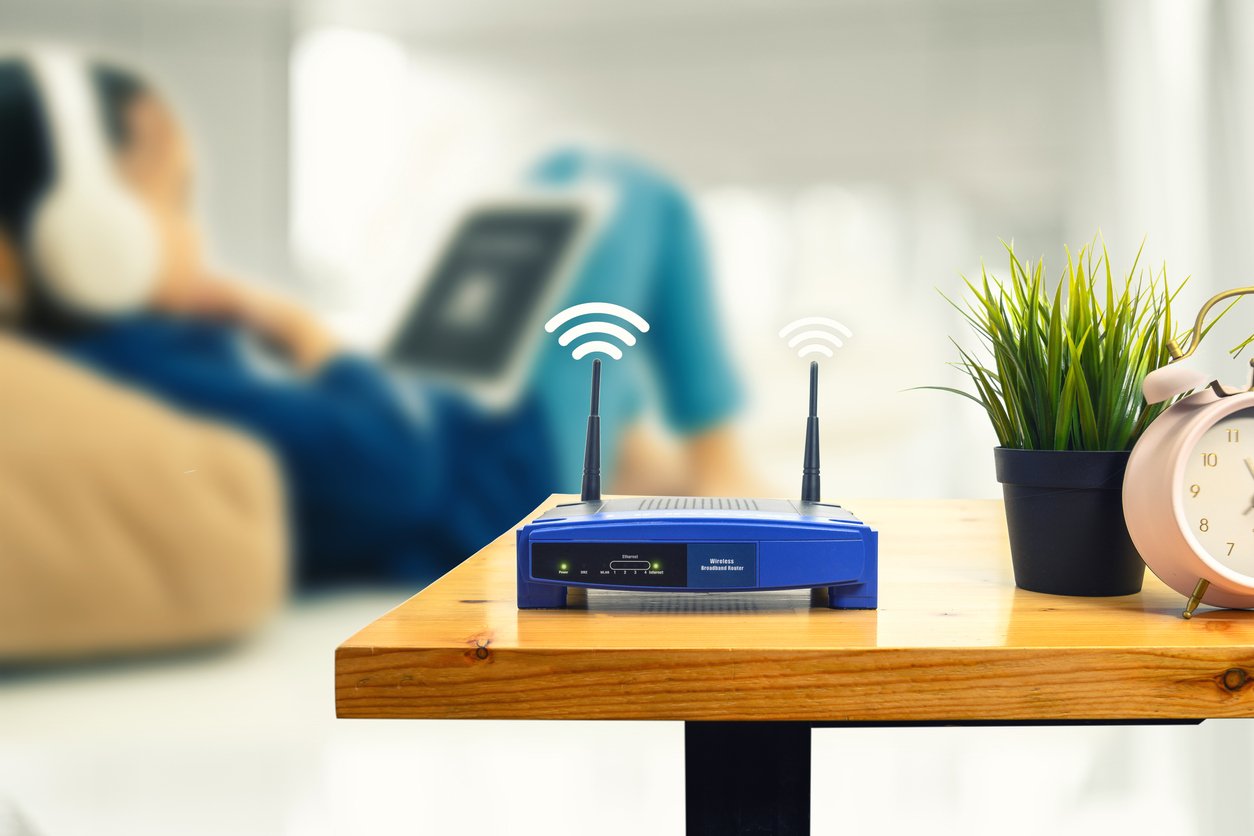WiFi slowing you down? We can help you with that. First things first, let’s make sure it’s not you. Run a speed test and turn off the WiFi on any unnecessary devices. If the test results match your plan and you’re not overloading the signal, try these fixes.
1. Move the Router
Location is crucial for strong WiFi. We get it—routers aren’t the most aesthetically pleasing bit of home decor, but trust us on this. Make sure it’s centrally located, put it higher, move the antennas—you get the idea. It doesn’t hurt to make sure it’s decently far from any other technology, too. Anything electronic, particularly Bluetooth devices, will interfere with your signal. High-powered mmWave 5G has the same issue, but at least at home, you can make sure your router isn’t shoved on a shelf with every other bit of hardware under the TV.
This may sound like a no brainer “tip,” but router placement can be tricky! Your coax outlet is in an inexplicably irritating location, the cable is too short, or you can’t feasibly get the router near the first-floor ceiling to ensure the signal reaches the second floor. Just do your best, and move on to the next tips!
2. Reboot the Router Regularly
Just think of it like your computer. And yes, you should wait ten seconds before plugging the router back in. On the plus side, most modern routers often default to the least busy channel when they reboot.
3. Change the Channel
Like TV before smartphones, remember? Your WiFi signal broadcasts across a few different channels. Naturally, the crowded channels slow down. Switching to another channel is an easy way to free up bandwidth and regain your normal streaming speeds. To do this, you need to access the router settings. This handy guide walks you through both finding and switching to the best channel available.

4. Boost the Signal
If none of the above fixes your WiFi troubles, you might look into external help. WiFi extenders or repeaters (same thing, multiple names) are a great way to boost your signal enough to cover your entire home. Wirecutter has a list of their top WiFi extender picks, which includes why you shouldn’t bother with the most expensive models.
5. Upgrade Your Router
If a WiFi extender still doesn’t help, it’s worth thinking about buying a new router. Odds are you have the default hardware provided by your ISP (hopefully you didn’t keep the default security settings!). That hardware isn’t the most powerful option, though. Based on the number of devices and power you need, a new router could make all the difference. CNet has a list of top routers for every need—from price to gaming to specific ISPs. For your business needs, we publish an annual top routers list, too.
And if you still can’t get a decent signal...
6. Take a Deep Breath and Call Your ISP
Desperate times call for desperate measures. If all else fails, your WiFi troubles are probably a “them” problem, not a “you” problem. If nothing seems off on Down Detector, call your Internet Service Provider. We wish you luck and a strong signal!

